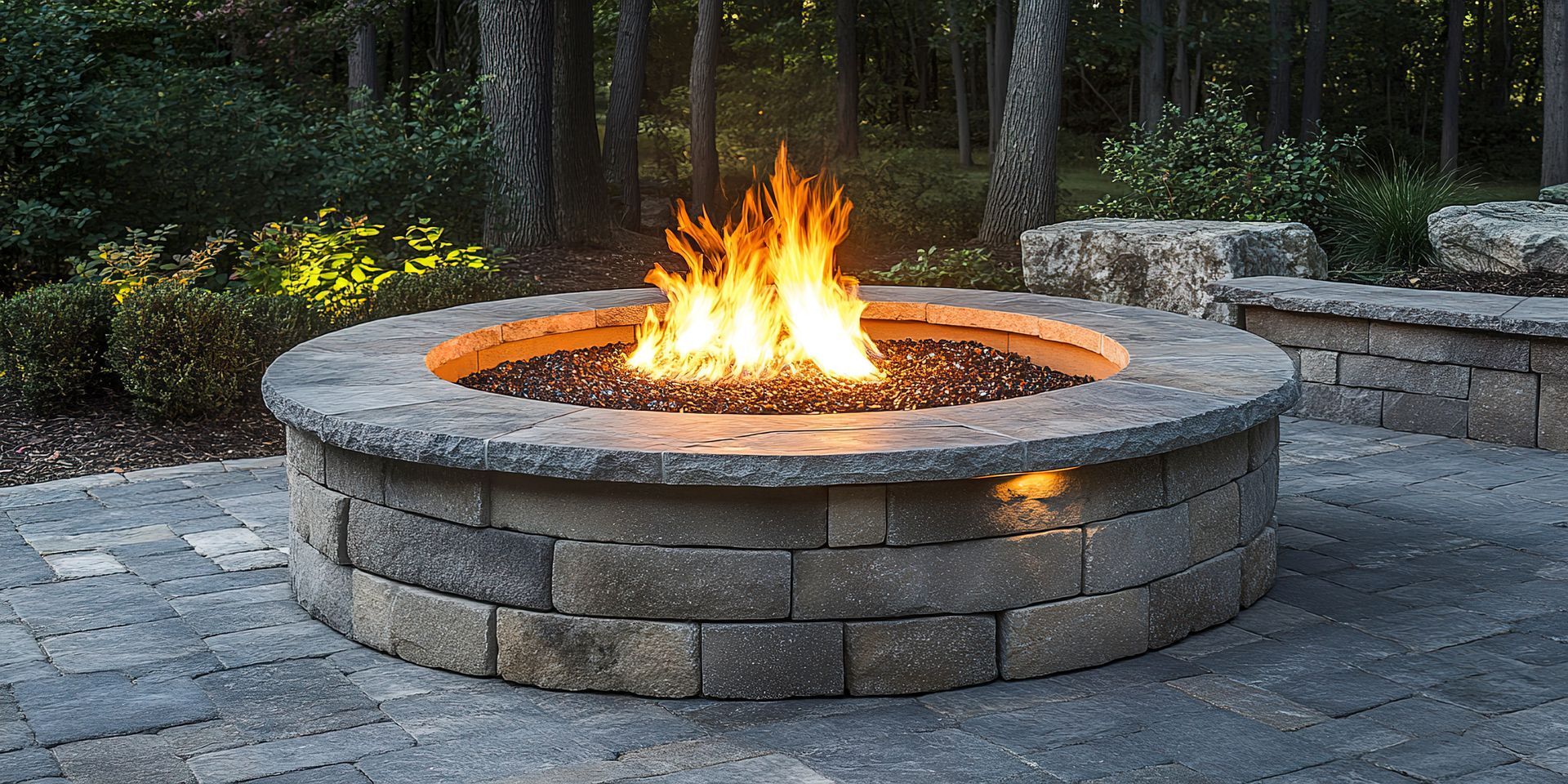Harlow Landscape Blog
Tips and tricks to help you during this journey. Learn about real estate, property management and everything in between.
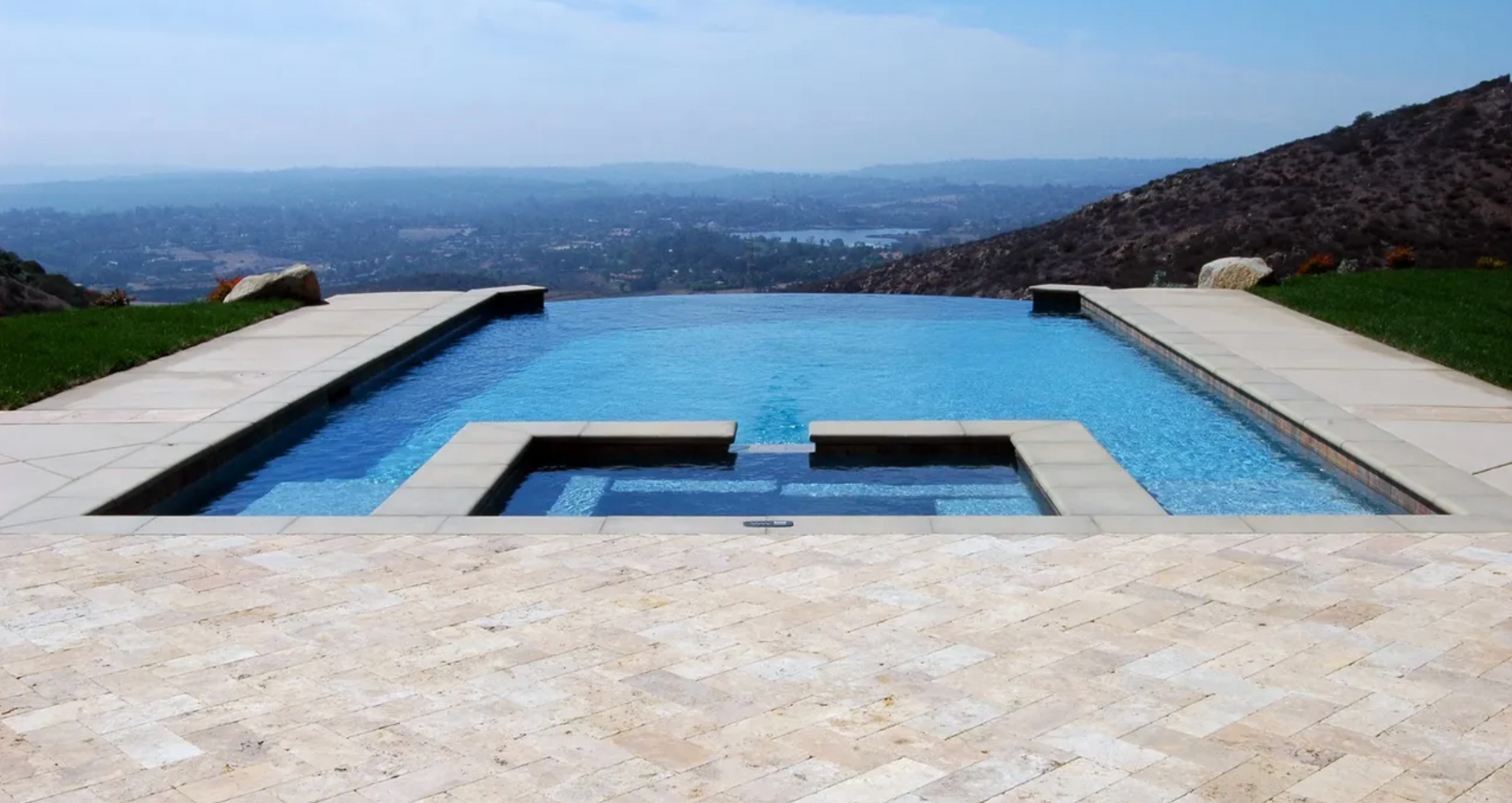
There’s no denying the visual appeal and luxury that pools and water features bring to a landscape. Whether it’s the tranquil sound of a backyard waterfall, the elegance of a koi pond, or the refreshing escape of a swimming pool, water elements can dramatically elevate your outdoor space. But while these additions offer beauty, relaxation, and even increased property value, they also come with year-round maintenance responsibilities that homeowners should understand before diving in. The Benefits of Adding Pools and Water Features 1. Aesthetic Appeal Water features add a dynamic, eye-catching element to your landscape. Whether it’s a modern reflecting pool or a classic tiered fountain, water brings movement, sound, and serenity that enhance your yard’s visual interest. 2. Property Value Boost A well-designed and well-maintained pool or water feature can increase the value of your home, especially in warm climates like Southern California. For buyers seeking a resort-style backyard, a pool can be a strong selling point. 3. Relaxation and Ambiance The sound of running water has a calming effect, making fountains, streams, and waterfalls popular for stress relief and creating peaceful environments. Pools offer a private oasis for relaxation, exercise, or entertaining. 4. Outdoor Entertainment A pool instantly becomes the centerpiece for gatherings, from kids’ birthday parties to adult evening soirées. Add features like lighting, lounge areas, or built-in spas to enjoy year-round. Types of Water Features to Consider Swimming Pools : From sleek lap pools to custom infinity pools, they provide recreation, exercise, and elegance. Fountains : Low-maintenance options that create ambiance in small or large spaces. Ponds : Naturalistic features that can include aquatic plants or fish like koi. Waterfalls and Streams : Often combined with other features to mimic natural landscapes. Spas and Hot Tubs : Relaxing additions that pair well with pools or function independently. The Maintenance Side of the Splash While the benefits are many, pools and water features do require regular upkeep. Here’s what to keep in mind: 1. Water Quality Management Pools : Require regular chemical balancing (chlorine, pH, alkalinity), skimming, and occasional shock treatments. Ponds and Fountains : May need filtration systems, algae control, and seasonal cleaning. Tip : An automatic chlorinator or saltwater system can simplify pool care. 2. Debris Control Falling leaves, bugs, and dirt can quickly accumulate in any water feature. Skimmers, covers, or nearby low-litter plants can help reduce cleaning time. 3. Pump and Filter Maintenance Mechanical components, such as pumps and filters, require routine inspection and cleaning. Without proper flow, water can become stagnant, allowing it to harbor bacteria and algae. 4. Seasonal Considerations Even in mild climates, seasonal changes can significantly impact maintenance. Winterizing or adjusting usage and chemical levels during cooler months helps protect your investment. 5. Energy and Water Usage Pools and larger features can consume a significant amount of energy and water. Investing in energy-efficient pumps and covers can reduce utility bills and evaporation. Is It Worth It? If you love the idea of transforming your backyard into a private retreat and are prepared to keep up with the maintenance, or hire a professional, then yes, pools and water features are a splashy investment worth considering. They enhance home enjoyment, elevate landscape aesthetics, and can provide a financial return when done correctly. Final Thoughts Adding a pool or water feature is a significant decision that combines lifestyle, design, and long-term maintenance considerations. The payoff? A beautiful, tranquil, and inviting outdoor space that enhances your daily life and your property value. Just be sure to weigh the maintenance requirements so your dream backyard doesn’t turn into a chore. Need help designing a water-wise, low-maintenance water feature that fits your space? Consult with a landscape professional who can help you bring your vision to life while planning for the upkeep it deserves.
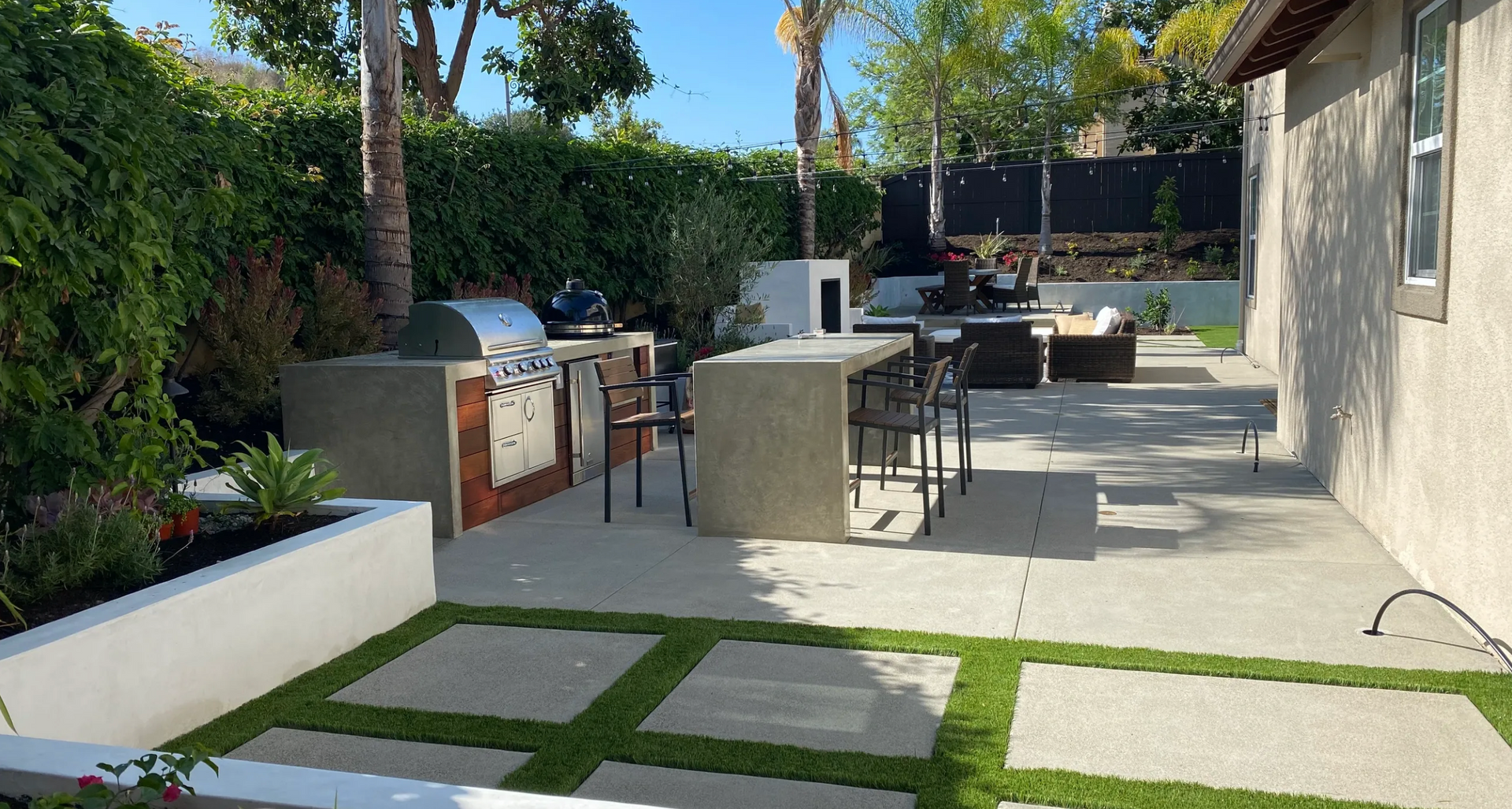
When it comes to home improvements that offer both aesthetic benefits and a solid return on investment (ROI), landscaping often tops the list, but it’s not just about planting a few flowers. A professionally designed landscape can transform your outdoor space into a functional, beautiful, and highly desirable extension of your home. Whether you're looking to increase curb appeal or preparing to sell, here’s why investing in a professional landscape design is one of the smartest moves a homeowner can make. The ROI of Landscaping: What the Numbers Say Studies consistently show that well-executed landscaping can increase a home’s resale value by up to 15% , and even more in competitive real estate markets. According to the American Society of Landscape Architects (ASLA), homeowners should budget about 10% of their home’s value for landscaping to see maximum ROI. Unlike interior upgrades, an incredible landscape makes a strong first impression , instantly setting your home apart in the minds of potential buyers. Why Professional Landscape Design Makes a Difference While DIY landscaping projects can add charm, hiring a professional landscape designer ensures your outdoor space is strategic, cohesive, and functional . Here’s how professional design takes things to the next level: 1. Cohesive Design with a Purpose Professional designers understand how to balance hardscaping and softscaping elements, integrate irrigation and drainage solutions, and create zones for entertaining, relaxing, or gardening. This leads to a yard that not only looks good, but also works for your lifestyle. 2. Increased Curb Appeal A professionally landscaped front yard instantly improves curb appeal. Defined walkways, healthy trees, structured plantings, and tasteful lighting can make your home look more inviting and well-maintained, which is key when it comes to resale. 3. Sustainable and Low-Maintenance Choices Landscape professionals know how to select native or drought-tolerant plants, efficient irrigation systems, and sustainable materials that reduce upkeep costs and environmental impact, something many modern homebuyers actively look for. 4. Year-Round Visual Interest Designers plan for seasonal color, texture variation, and plant life cycles so your yard looks great all year, not just in spring. This level of planning increases perceived value and long-term satisfaction. 5. Maximized Outdoor Living Space From patios and fire pits to outdoor kitchens and shaded lounging areas, professional designs transform your yard into a true extension of your living space , increasing usable square footage without requiring an addition. Landscaping Features That Add the Most Value If you're focused on ROI, here are some landscaping features that tend to offer the highest returns: Professional front yard design and plantings Defined outdoor living spaces (e.g., patios, decks, pergolas) Efficient irrigation and lighting systems Mature trees and native plants Stone walkways and retaining walls Low-maintenance and drought-tolerant designs The Bottom Line Investing in professional landscape design isn’t just about beautifying your yard; it’s about making a wise financial decision that boosts your home’s appeal and value. Whether you're staying for years or planning to sell soon, a well-designed outdoor space enhances quality of life and pays real dividends in the long run. If you’re ready to transform your yard into a valuable asset, consider working with a professional landscape designer who understands your vision, your home, and your local environment. The results will be worth every penny.
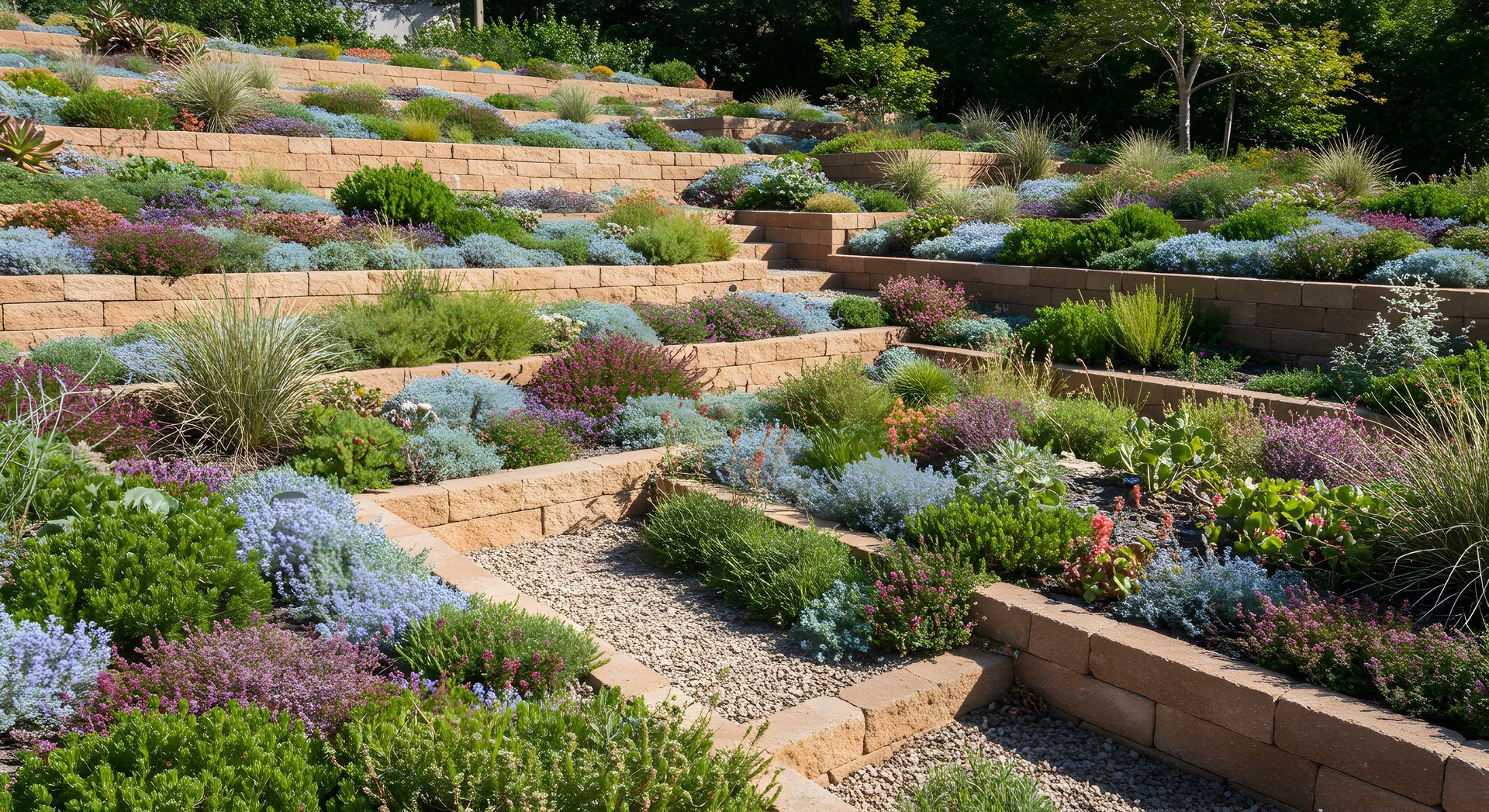
In Southern California, where water conservation is a critical concern due to periodic droughts and a generally dry climate, drought-tolerant landscaping is not just a style choice—it's an essential strategy for sustainable gardening. This type of landscaping, often called xeriscaping, minimizes the need for water from irrigation. It offers a way to create visually striking outdoor spaces that are both low-maintenance and environmentally friendly. This ultimate guide will walk you through the steps to develop a drought-tolerant landscape that thrives in Southern California's unique climate. Understanding Drought-Tolerant Landscaping Drought-tolerant landscaping involves using plants that require minimal water and implementing design techniques that reduce water usage. The goal is to create a garden that conserves water, reduces maintenance, and looks beautiful throughout the year. Benefits of Drought-Tolerant Landscaping Water Conservation: Significantly reduces water use in your garden, which is crucial in drought-prone areas. Lower Maintenance: Requires less mowing, pruning, and irrigation. Reduced Costs : Cuts down on water bills and gardening expenses. Environmental Protection: Supports local wildlife and reduces your carbon footprint by limiting the need for gas-powered garden tools and synthetic fertilizers. Step-by-Step Guide to Creating a Drought-Tolerant Landscape 1. Plan Your Design Start with a thoughtful design that considers your existing landscape, soil type, and how you want to use the space. Identify areas that receive more sun and those that are naturally cooler and shadier. This will help you select plants that are suited to specific conditions of your yard. 2. Improve the Soil Drought-tolerant plants often thrive in well-draining soil. Amend your soil with organic matter to improve its texture and nutrient content, which will help establish robust root systems that make better use of available water. 3. Choose the Right Plants Select native plants or those adapted to a Mediterranean climate, as they are naturally drought-tolerant and more resistant to local pests and diseases. Some popular choices include: Succulents (e.g., Sedum, Echeveria) California natives (e.g., California Poppy, Matilija Poppy) Grasses (e.g., Blue Fescue, Deer Grass) Shrubs (e.g., Sage, Lavender) 4. Use Mulch Apply a generous layer of mulch around your plants to help retain soil moisture, suppress weeds, and reduce ground temperature. Organic mulches like bark or coco coir not only conserve water but also break down over time to improve soil quality. 5. Efficient Irrigation Invest in a drip irrigation system with a smart controller that adjusts watering based on weather conditions and soil moisture levels. Drip systems deliver water directly to the base of plants, minimizing waste and maximizing efficiency. 6. Incorporate Hardscaping Use hardscaping elements such as rocks, pebbles, and sand to create interesting, water-wise garden paths and areas. These materials do not require any water and can add texture and color to the landscape. 7. Maintain Regularly Even low-maintenance gardens need some upkeep. Regularly check your irrigation system for leaks and adjust timers seasonally. Prune dead or overgrown branches to help plants use water more efficiently. Con clusion Drought-tolerant landscaping is a practical, beautiful, and sustainable choice for Southern California homeowners. By choosing the right plants and employing water-wise gardening techniques, you can create a landscape that is not only easy to maintain but also environmentally friendly and cost-effective. Whether you are a gardening novice or a seasoned green thumb, these strategies will help you cultivate a garden that thrives in the local climate, enhances your outdoor living space, and conserves precious water resources
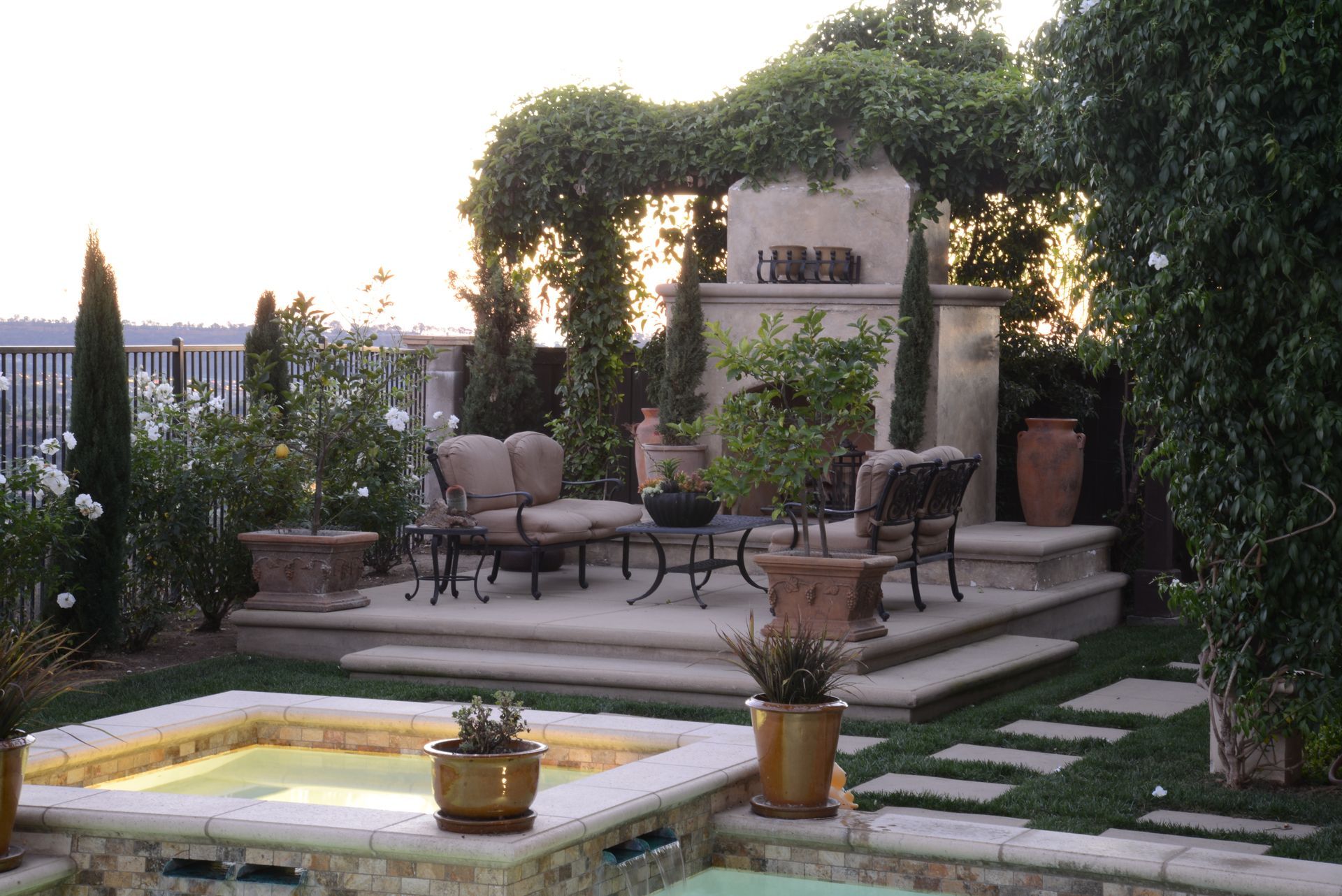
Maintaining a beautiful landscape is rewarding yet time-consuming for many homeowners. In today’s fast-paced world, not everyone has the hours to dedicate to gardening and yard work. Fortunately, creating a stunning outdoor space doesn't have to be labor-intensive. Here are some practical tips for designing a low-maintenance landscape that is perfect for busy homeowners who enjoy beauty without the burden of constant upkeep. 1. Choose the Right Plants Native Plants Opt for native plants adapted to your local climate and soil conditions. These plants require less water, fewer fertilizers, and minimal care, thus saving you time and effort. They are also more resistant to local pests and diseases. Perennials Over Annuals Perennials are the best choice for low-maintenance landscaping because they grow year after year, whereas annuals need to be replanted annually. Examples of hardy perennials include Daylilies, Coneflowers, and Sedum. Drought-Tolerant Plants Consider incorporating drought-tolerant plants such as Lavender, Sage, and Ornamental Grasses. These plants require less watering and are ideal for areas prone to dry spells. 2. Implement Mulching Mulch is a low-maintenance landscaper’s best friend. It reduces the watering frequency needed by helping soil retain moisture, suppresses weeds (which are time-consuming to remove), and adds a finished look to garden beds. Organic mulches, like wood chips or bark, also enrich the soil as they decompose. Apply a 2-3 inch layer of mulch around your plants for optimal benefits. 3. Use Hardscaping Incorporating hardscaping elements such as stones, pavers, and gravel reduces the area of your yard that requires watering, mowing, or pruning. Create walkways, patios, or even a rock garden to add interest and functionality to your space without the maintenance that comes with grass or flower beds. 4. Install an Irrigation System Investing in a drip irrigation system or soaker hoses can significantly cut down the time you spend watering your plants. These systems deliver water directly to the base of the plant, which is more efficient and uses less water than traditional sprinkling methods. Consider a timer to automate the process, ensuring your plants get watered at the best times of day without you having to lift a finger. 5. Choose Low-Maintenance Lawn Alternatives Traditional lawns are high-maintenance and resource-intensive. Consider lawn alternatives like clover, moss, or ornamental grasses that require little mowing, watering, or fertilizing. Ground cover plants such as Creeping Thyme and Blue Star Creeper can also provide a beautiful, low-maintenance alternative to grass. 6. Simplify Garden Design Simplify your landscape design by using fewer plant varieties in larger groupings. This creates a visually appealing, cohesive look and reduces the complexity of care and maintenance. Straight, clean lines and well-defined garden beds are easier to manage than intricate, sprawling designs. 7. Properly Space Your Plants Give plants enough space to grow to their full size. Overcrowding can lead to excessive pruning and increase the likelihood of disease. Proper spacing helps plants stay healthier, reducing the need for your intervention. 8. Utilize Potted Plants Pots and containers are perfect for adding splashes of color around your yard with minimal effort. They are easier to manage than large garden beds and can be moved or changed. Choose large containers to reduce watering frequency and opt for durable materials like fiberglass or resin. Conclusion Low-maintenance landscaping is about making smart choices in the planning phase to save time. You can create a beautiful landscape that fits your busy lifestyle by selecting the right plants and materials and implementing systems that help automate garden tasks. Remember, the goal is to enjoy your outdoor space, not to become a slave to it. With these tips, you can achieve a beautiful and practically self-sustaining garden.
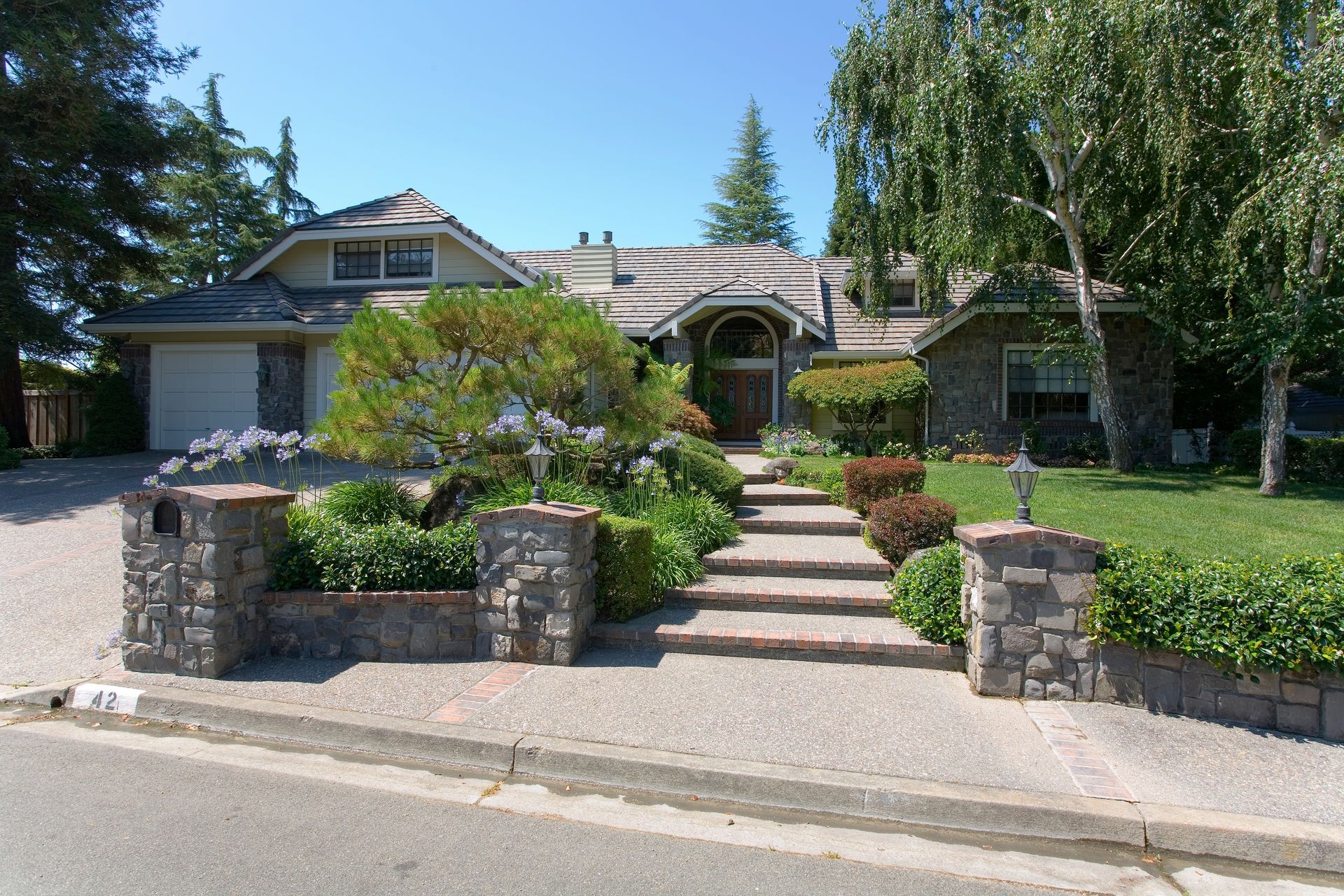
Two primary elements define your landscaping space: hardscaping and softscaping. Both are essential in creating a functional and visually appealing outdoor environment but serve different purposes. Understanding these differences is crucial when planning a landscape design that looks good and functions well for your needs.

